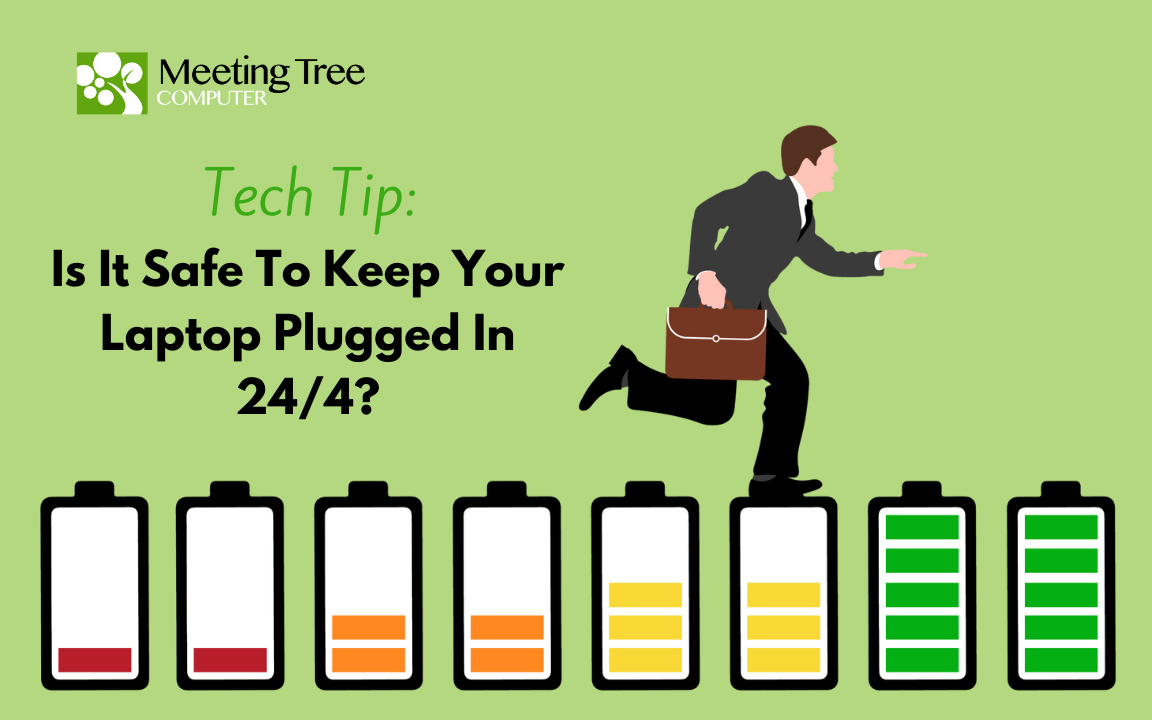Unfortunately, the answer is not as straightforward as you might think.
In terms of physical safety, yes, it’s perfectly safe to leave your laptop plugged in all the time.
There’s practically no risk of anything catching on fire. Modern laptops have voltage control that kicks in when the battery is full, ensuring the charging stops, even if the charger remains connected. These fail-safe mechanisms rarely go haywire, and laptops boast additional safety features to cut the connection before any real damage occurs.
Of course, this assumes that the charger and the electrical outlet are in decent shape – a faulty outlet might set your world ablaze. A short in an outlet can cause a fire, but that’s not limited to a charging laptop.
Is it okay, then, to keep your laptop perpetually charging?
This is where it gets tricky. Lithium-ion batteries don’t appreciate extremes – too low or too high a charge can prematurely age them. As batteries age, they lose their knack for holding a full charge. So, while your laptop won’t turn into a fireball, you might notice its battery isn’t the powerhouse it once was.
Another worry is heat. Lithium-ion batteries degrade over time, even when the device is powered off. Continuous topping off introduces heat, which, like extreme charge levels, speeds up the aging process, leading to reduced charge capacity over the long haul.
Every lithium battery has a finite number of charges before it calls it quits. Leaving it on AC introduces unnecessary charge cycles, causing the battery to age sooner than it otherwise would.
So, what’s the best practice?
Charge it to the brim, unplug it, and keep it off the charger until it asks for juice again. It won’t prevent battery aging completely because nothing can, but it’ll slow down the process significantly compared to the constant 100% charge regimen.
Now, how do you check your laptop battery health?
There are methods for both Windows and macOS machines, and we’ll guide you through each.
MAC
- Click the Apple menu button and select System Information.
- Open the hardware section in the left margin and select the Power option.
- Your battery information will be there.
Windows PC
- Open a Command Prompt. The easiest way to do this is to type “CMD” without the quotes in the Windows search bar.
- Type powercfg /batteryreport and press Enter on your keyboard.
- Command Prompt will generate a battery report and then save it to a folder, which it’ll show you when you enter the command.
- Navigate to that folder on your machine and access the report.
The report is in HTML, so you’ll need to use a browser to open it. Fortunately, all browsers can handle HTML files.
Tips On Extending Battery Life on Our Laptop
Here are some proactive measures you can take to extend your laptop battery life:
Optimize Power Settings:
Take control of your laptop’s power settings. Adjust them to strike a balance between performance and energy efficiency. On both Windows and macOS, you can tweak power plans or energy saver settings to ensure your laptop is not overexerting itself when it doesn’t need to:
Dim Your Screen
Conserve your laptop’s battery life by doing the following: In the Power setting under your control panel, you will see the “Power Options” setting. Pick the power setting plan your computer is set to and click on change plan settings. There will be a column for settings while on battery and one while plugged in. On the “on battery” setting, move the slider to reduce the display brightness. Save the setting. Unplug your laptop, and you will notice the brightness change. You can adjust until you find a setting you are comfortable with. If your computer is running low on battery and you need it to last longer, you can use this technique to get it as dim as possible and make the battery last longer.
Unplug Peripherals
Disconnect any unnecessary peripherals when not in use. USB devices, external hard drives, or a constant Wi-Fi connection can draw power from your laptop. Unplugging them when they’re not needed can contribute to a longer battery life.
Regularly Update Your Operating System
Keep your operating system up-to-date. Software updates often include optimizations and improvements that can positively impact your laptop’s power management. By staying current, you’ll benefit from the latest enhancements designed to maximize battery efficiency.
Manage Background Applications
Keep an eye on applications running in the background. Some programs, especially those with automatic updates, can drain your battery without you even realizing it. Close unnecessary apps and turn off automatic startup for programs that aren’t essential, ensuring more efficient use of your laptop’s resources.
By incorporating these tips into your laptop usage routine, you’ll not only preserve your battery life but also enhance the overall performance and longevity of your device. It’s a win-win for both you and your trusty laptop!
If you have any questions or concerns about the state of the hardware in your office, feel free to reach out. Meeting Tree Computer has helped businesses across the Hudson Valley with responsive IT support since 1999. We’re here to help.
Meeting Tree Computer: Your Orange County, NY IT Company

